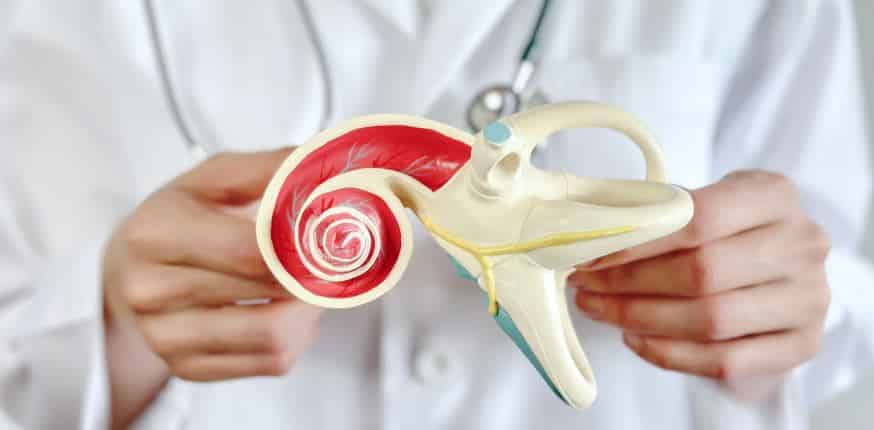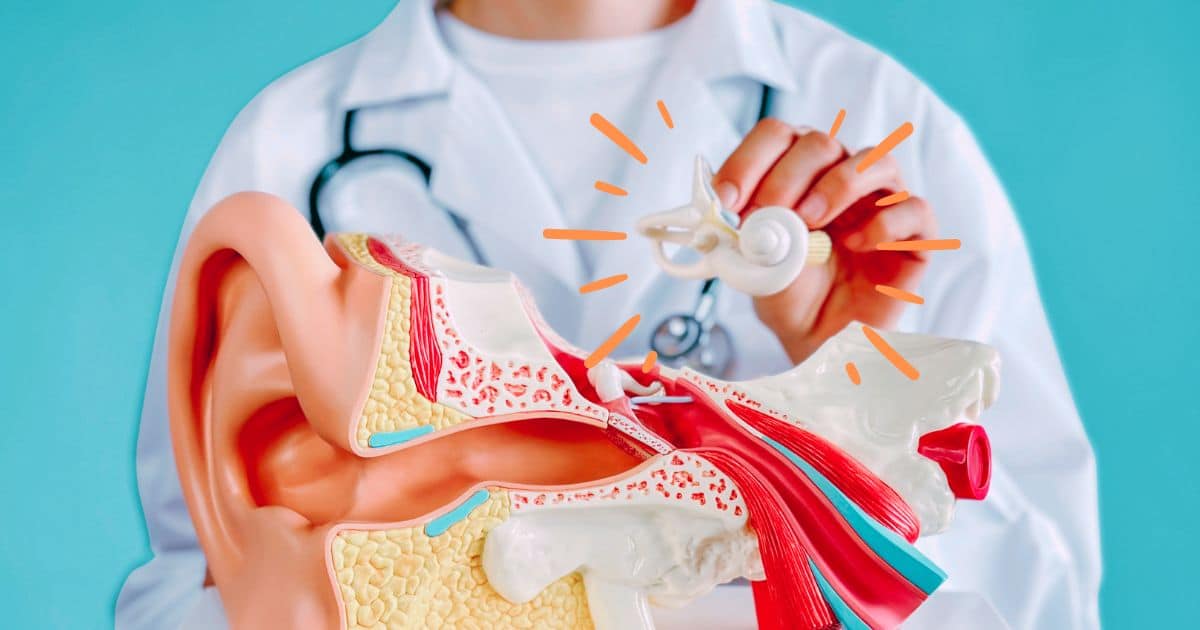Since the writing of my previous article about Meniere’s Disease in 2014, I had not experienced a Meniere’s episode for eight and a half years. Not even one symptom of hearing loss, tinnitus, recruitment, dizziness, or nausea had been present. I firmly believe that Meniere’s episodes occur based on food and beverage consumption. In May of 2022, I violated my own advice about watching sodium intake. My wife and I attended three graduation parties on a Friday night: the first party featured brisket, the second offered pulled pork sandwiches, and the third had both. After eating large amounts of high-sodium foods at all three parties, I lost half of my hearing in my right ear by the next day—ironically, the same ear that was affected eight and a half years ago.
I responded by cutting my sodium intake and drinking plenty of water. Over the next several weeks and months, my hearing fluctuated up and down, never quite returning to normal. Previously, I had recovered in about one month, but not this time. I began to wear hearing aids, which I continued using for approximately eight months; they helped manage the situation somewhat. However, I started experiencing dizzy spells lasting between twelve and eighteen hours.
Previously, I had only experienced one such spell, lasting just two hours. These dizzy spells were much worse, and it took me twelve months to stabilize my symptoms. From May 2022 to May 2023, I endured a total of 13 dizzy spells before finally finding relief.
Discovering Potassium as a Solution
After extensive trial and error, I eventually discovered that by increasing my potassium levels, I could restore my hearing to normal levels and eliminate the dizzy spells.
“…by increasing my body’s potassium levels, I could restore my hearing to normal levels and eliminate my dizzy spells.”
Previously, reducing my sodium intake had been enough to stabilize my condition, but this time, it wasn’t sufficient. Adding potassium to my routine proved essential in managing my symptoms.
Understanding Inner Ear Fluids and Their Role
I revisited the function of inner ear fluids to see if there could be a correlation with my Meniere’s symptoms. Endolymph, a fluid that fills the labyrinth of the inner ear, plays a vital role in sensory functions. Its composition varies depending on its location in the inner ear, but it is generally a positively polarized solution of potassium salts, much like intracellular fluid.
Endolymph is uniquely rich in potassium (150mM) and low in sodium (1mM), a balance essential for normal hair cell function. It is secreted by the stria vascularis and dark cells in the labyrinth of the ear. The endolymphatic potential is a current generated by the endolymph, positive inside the scala media and negative outside its wall.

While the exact processes behind endolymph formation and maintenance of ionic composition differences between it and perilymph are not yet completely understood, the secretory tissue known as the stria vascularis, located in the lateral wall of the cochlear duct, is thought to play a significant role in maintaining the high potassium-to-sodium ratio. Other tissues in the cochlea, along with the dark cells of the vestibular organs (which must produce their own endolymph), are also believed to contribute to the ionic composition of endolymph.
Perilymph, on the other hand, is a clear, watery fluid that fills the space between the bony and membranous labyrinths of the inner ear. It has a high concentration of sodium ions and helps to generate the endolymphatic potential.
Comparing Potassium and Sodium Ratios in Common Foods
I have been symptom-free for over four months since experimenting with my potassium and sodium intake. There are different recommended daily allowances for both sodium and potassium. My previous article discussed sodium variations, but I’d like to look more closely at potassium levels. The recommended daily allowances for potassium range from 3,500 mg to 5,000 mg.
Without taking a potassium supplement, it is challenging to consume too much potassium through foods and beverages alone.

Example of foods with high levels of potassium
Since I wanted to improve my Meniere’s symptoms through diet, I began reading labels to compare potassium-to-sodium ratios in various foods and beverages. Here’s a sample of my findings:
- Coconut Water: High in potassium and low in sodium, making it an excellent choice. The Vita Coco brand, for example, has a ratio of 646 mg of potassium to 100 mg of sodium in an 11.1 oz serving. Pressed coconut water is even better, with 979 mg of potassium to 75 mg of sodium.
- Body Armor Drinks: These drinks come in a variety of flavors, with coconut water as a base, and the taste of coconut is minimal. A 12 oz bottle provides 510 mg of potassium to 20 mg of sodium. Costco also carries larger bottles, like the 28 oz option, which contains 1,240 mg of potassium to 70 mg of sodium. There is also a zero-sugar version with 1,080 mg of potassium to just 10 mg of sodium.
I also reduced my coffee intake, as caffeine seemed to trigger my dizziness in the initial stages of my Meniere’s condition. I found, however, that the 6.5 oz Starbucks espresso canned drink offers 523 mg of potassium to 120 mg of sodium, and a double shot energy drink contains 1,053 mg of potassium to 180 mg of sodium.
Dairy products can be high in sodium, especially cheeses, but a 12 oz bottle of Fairlife 2% milk offers 600 mg of potassium to 150 mg of sodium. Label readings are essential as these amounts vary by brand.
A Personal Conclusion: Balancing Potassium and Sodium
In my opinion, individuals suffering from Meniere’s Disease may be deficient in potassium. Though this is based solely on my case example, I do believe there is a strong correlation between the potassium and sodium levels within the inner ear and the daily potassium and sodium intake in our diets.
Achieving a healthy potassium-to-sodium ratio has allowed me to enjoy occasional high-sodium foods without triggering symptoms. Each person will need to find their own ideal potassium-to-sodium balance to manage their Meniere’s symptoms. Hopefully, this approach will empower others to take control of their diet for a healthier lifestyle.
Ken Stallons, MS, attended the University of South Dakota, receiving a Bachelor of Science degree in Business Administration and Accounting. Following college, he attended Southern Illinois University, receiving a Masters in Communication Disorders and Audiology. Ken is a board certified audiologist, serving as a Fellow of the American Academy of Audiology as well as a member of the Nebraska Hearing Society. Ken served as President of the Nebraska Hearing Society in 2012 and is a past board member of the Iowa Hearing Aid Society. He has been working in the hearing healthcare field since February 1984. He is married and has two children. Ken currently sees patients at the main ENT Specialists, PC clinic location in Omaha as well as Superior, NE.






